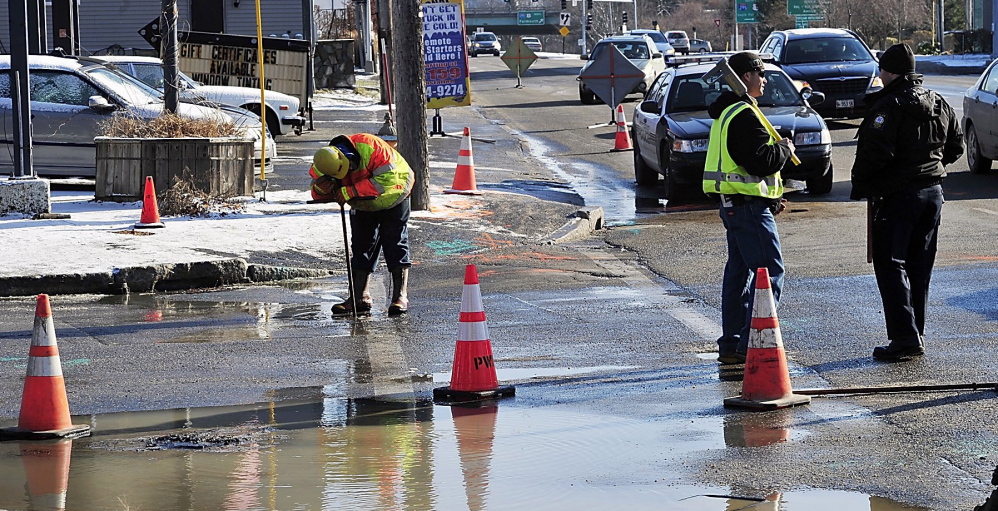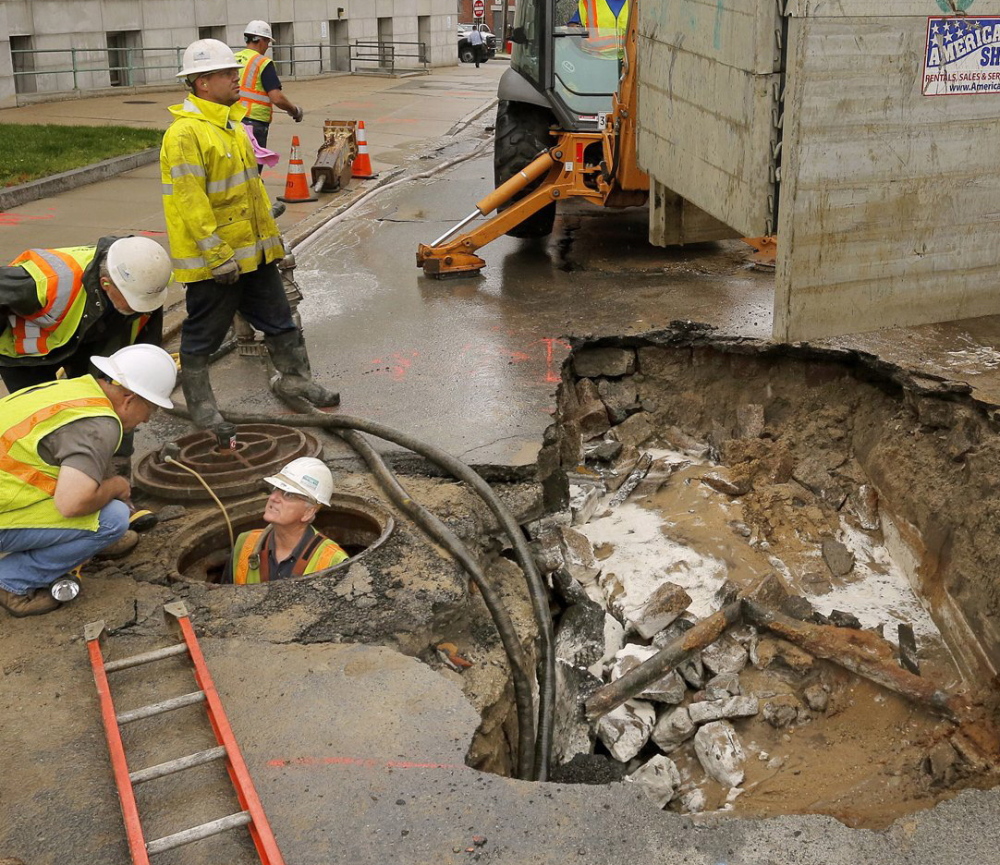Water rates are expected to rise by 3 percent next year in the Portland Water District, and the utility is hiring an advertising firm to convince you that it’s a good deal.
The first year of the three-year “Value of Water” campaign is expected to cost $35,000, said Michelle Clements, spokeswoman for the district. Its goal is to raise awareness about the cost of providing clean water to hundreds of thousands of homes, at a time when the district is expected to double – from $3.5 million in 2013 to $7 million in 2016 – its investment in replacing old underground pipes.
“Everyone turns on their faucet and it’s a given that clean water will come out,” said Guy Cote, president of the water district’s elected Board of Trustees. “Everyone is feeling the pinch with infrastructure upgrades.”
A 3 percent rate increase could add almost a dollar a month to the bill for a typical family of four. It could add about $75 for a large industrial user.
John Norton, president of Cozy Harbor Seafoods in Portland, said his seafood processing business is a heavy water user, but it’s affected more by rising sewer rates, which are set by host communities and are much more expensive than water rates.
Norton would not comment on the water district’s plan to spend money on advertising, but he suggested that outside assistance with communications could be a good thing for the district.
“To my knowledge, the Portland Water District has not been really good about communicating with its customers,” Norton said. “You don’t hear much from the Portland Water District until you get your bill.”
The utility provides water from Sebago Lake to about 190,000 people in 11 communities from Raymond to Cape Elizabeth, including Portland and South Portland, through a 975-mile network of pipes.
Nearly 100 miles of the district’s water mains are more than 100 years old, which is considered beyond the pipes’ useful life. And about 85 miles of pipes that were installed in the 1920s and 1930s are more likely to break because they were made when there was a scarcity of metal.
Clements said the water district estimates that a $140 million investment in water mains will be needed in the next 20 years to prevent disruptive breaks. Those costs will be passed on to ratepayers.
“We’re definitely increasing our investment in water mains,” Clements said. “People need to understand where the money is going.”
Last year, Portland residents saw what a catastrophic failure looks like when a water main broke on Somerset Street in the Bayside neighborhood, spewing 20,000 gallons of water per minute for 20 minutes. Vehicles parked on Somerset Street were swamped in several feet of water, and residents and restaurants were ordered to boil their water before using it because of potential contamination.
Water main breaks have generally decreased in the district since 1985, when there were 180. But they have been more frequent this year than last year. The most recent break, last week on Bolton Street, affected traffic on outer Congress Street for several hours.
The district says it has had 94 water main breaks this year, compared with 80 last year. Most of this year’s breaks occurred in January and February, with another spike in the spring.
The Board of Trustees recently approved a $38.3 million budget for 2014, a 3.4 percent increase over the current budget. The 2014 budget assumes a rate increase of 3 percent, but the increase has yet to be approved by the Maine Public Utilities Commission.
By adding $2.5 million to its water main replacement budget, the district will seek to replace five to six miles of water mains next year, Clements said. She estimated that it costs $1 million per mile to replace a main.
If the rate increase is approved, the monthly bill for a family of four that uses 7,200 gallons of water a month will increase from $26.88 to $27.67. A manufacturer that uses 2 million gallons a month would face an increase of about $75 a month, to $2,575.
The Portland district is not alone in facing rising costs for water main replacements.
The U.S. Environmental Protection Agency’s 2013 Drinking Water Infrastructure Needs Survey and Assessment estimates that a $384 billion investment will be needed nationwide over the next 20 years to maintain clean and safe public drinking water. In Maine, that investment is expected to be nearly $1.8 billion, according to the EPA.
Clements, who handles communications and advertising for the Portland Water District, said an advertising firm is being sought to offer more creative ideas for educating people about their water supply. Funding for the campaign will come from the district’s public relations budget of $90,000.
“It’s doing something a little bit differently and refreshing our communications approach,” Clements said.
The district says that its rates are 10 percent below the national average, and that its system has fewer failures on average than other systems, even with relatively modest rate increases and with very few complaints. Last year, water rates increased by 1.3 percent.
Cote, the board president, said he learned about water advertising campaigns at a recent conference, and believes the Portland district’s campaign will be worth the cost.
“I think it’s a good educational tool,” he said. “In comparison to the overall budget, I think it will be a good investment.”
Randy Billings can be contacted at 791-6346 or at:
rbillings@pressherald.com
Twitter: @randybillings
Send questions/comments to the editors.




